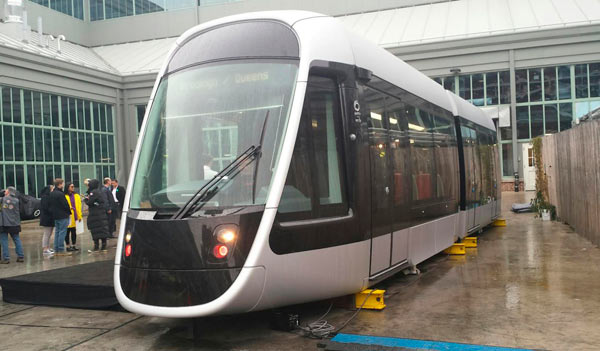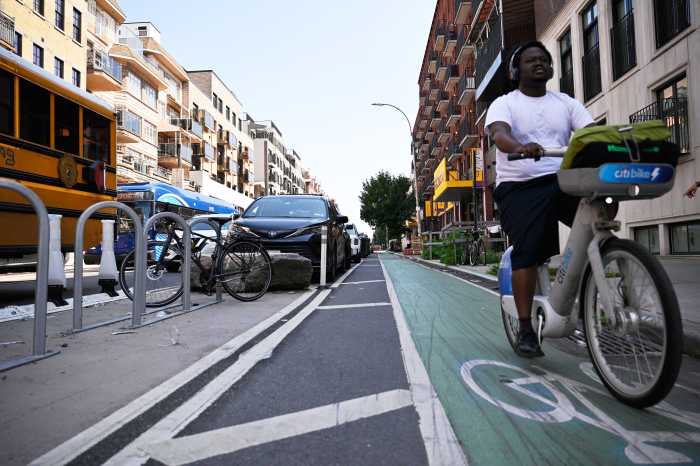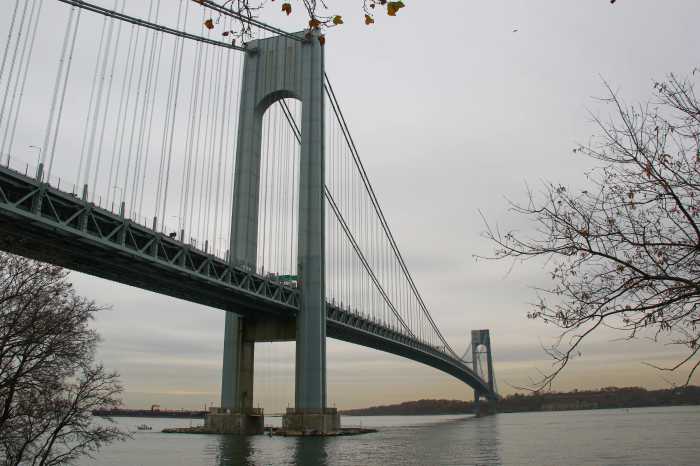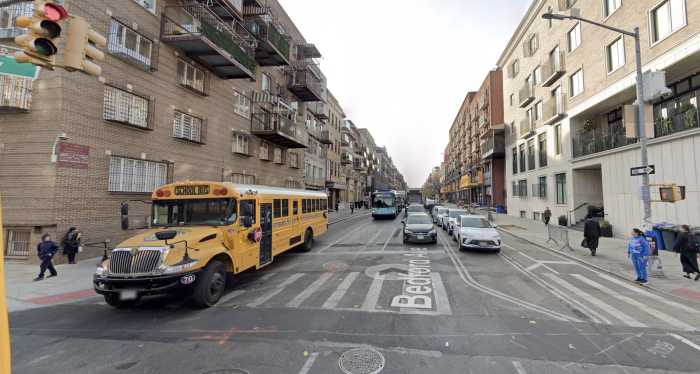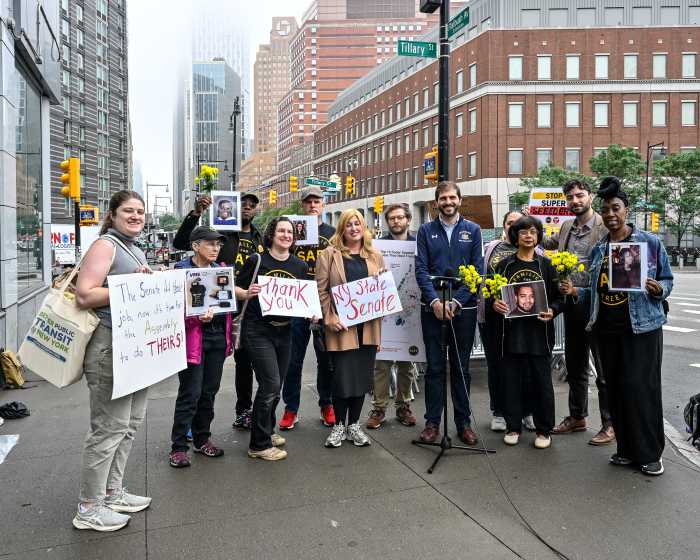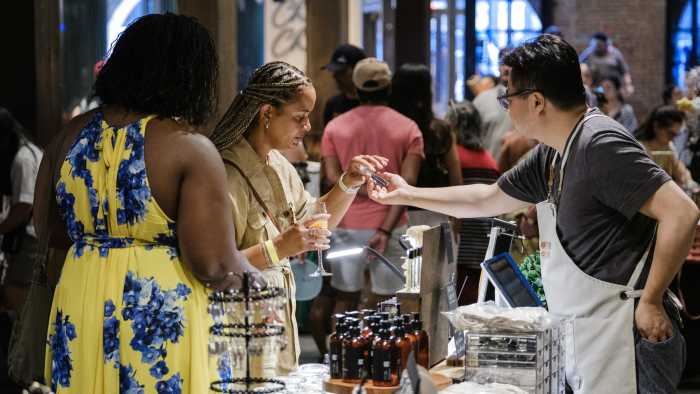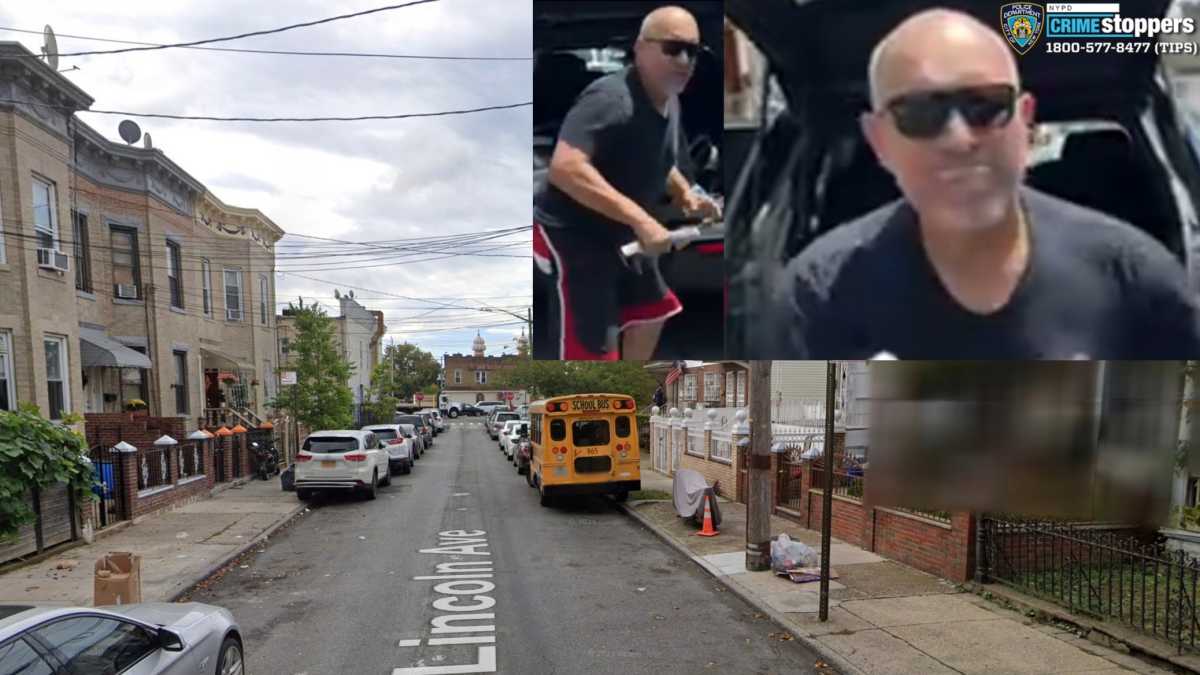They’re on different tracks.
City officials recently butted heads with Mayor DeBlasio over the future of his beloved $2.5-billion trolley that would run from Sunset Park to Queens, admitting reservations about its financial feasibility that they then recanted after their boss proclaimed on public radio that the project is rolling forward.
Hizzoner’s second in command, Deputy Mayor Alicia Glen, acknowledged on April 3 that studies of the streetcar scheme’s revenue model — which is based on the claim that the light-rail line will pay for itself with additional tax revenue earned from increased development along its waterfront route — are delayed, and that local leaders may be forced to consider dropping the project if research shows its bill can’t be paid by building alone, according to a New York Daily News report.
And a day later, a DeBlasio spokeswoman echoed Glen’s sentiments that there’s a chance the Brooklyn Queens Connector trolley — which the mayor first pitched as a system to serve subway-starved coastal neighborhoods in 2016, and has since earned the backing of several real-estate companies — may actually never get moving.
“The BQX can bring jobs and a brand new green transportation system to a series of transit-hungry Brooklyn and Queens waterfront neighborhoods,” Melissa Grace said on April 4. “As we wrap up a block-by-block study, we are determining if increased tax revenue created by the project will pay for it, or if we need a city subsidy to make it work, and ultimately if we can move forward with this project.”
Two days after that, however, DeBlasio doubled down on his commitment to the Connector, claiming he’s no longer just looking for city cash to pay for it, but seeking support from the Feds. The mayor specifically called on Brooklyn native Sen. Chuck Shumer — whose daughter runs the pro-trolley group Friends of The Brooklyn Queens Connector, which last November revealed a prototype of the system’s streetcars — to help get money for the tram opposed by several local pols and residents, who charge it will accelerate gentrification and cause rents to skyrocket.
“It is a big, complicated endeavor and it’s certainly going to require some federal support as well, which is something I am very hopeful about, particularly because of the presence of Sen. Schumer and the role he plays,” DeBlasio said live on the April 6 episode of WNCY’s The Brian Lehrer Show. “We are moving forward but we have to get the exact details right. And we are going to have plan out going forward.”
And hours after Hizzoner assured listeners his trolley plan wasn’t falling off the rails, Grace fired off a modified version of her initial comment on it, recasting the statement not as a question of if the project will move forward, but how it will advance.
“The mayor calls it as he sees it, and what he sees is that the BQX can bring jobs and a brand new, green-transportation system to growing and transit-hungry Brooklyn and Queens neighborhoods,” she said. “With a block-by-block study, we’ll determine the best way forward – including if federal or other public funds are needed.”
The mayoral spokeswoman later defended her revised official stance, arguing nothing had changed in the city’s forecast for the scheme.
“I don’t know that it changed. The mayor elaborated a little today,” Grace said. “We are moving forward but have to get the exact details right — a lot of moving parts.”
The trolley’s proponents turned up the pressure on DeBlasio following his reassurances, demanding on Monday that he prove the slowly advancing project will come to fruition before he leaves office.
“We are calling on your administration to take concrete steps to indicate that this critical infrastructure project will indeed break ground during your mayoralty,” the Friends of The Brooklyn Queens Connector wrote in a letter to Hizzoner that the New York Times first reported and this newspaper later obtained. “We are urging you to lay out a path — through community outreach and consultation, environmental analysis and additional engineering and design work — to definitively make that clear.”
Financial troubles, however, aren’t the only potential hazards facing the streetcar proposal, according to the city’s own transit experts, who previously warned that laying its tracks could complicate their looming repairs to a decrepit stretch of the Brooklyn–Queens Expressway because both infrastructure projects will unfold in Brooklyn Heights.
And now that state pols green-lit the streamlined design-build process for the Department of Transportation–led makeover of the expressway, an agency rep said that work could start as early as 2020 — a year after DeBlasio initially hoped to begin building the light-rail system.


